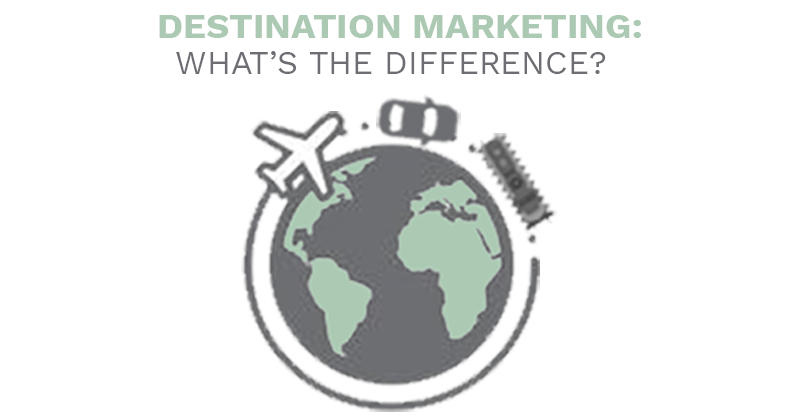What’s So Different About Destination Marketing?

Destination Marketing involves promoting and encouraging travel to desired locations. The primary objective is to increase visitors and make your consumers interested in your location before they arrive.
In Part 1 of this blog series on Destination Marketing, we delve into what really makes destination marketing so different: human behaviour. When planning travel, people behave differently than when researching a product. In a recent study by TrekSoft, they found that 56 percent of destination marketing organizations recognize experiences to be a vital part of their marketing tactics. Here are some of the differences in how future travellers behave.
Potential Travellers Love to Read
When it comes to dreaming about where you’re going to take that next big trip, the more information, the more engaging the content, the more positive personal stories of roads travelled, the more likely someone is to visit your destination. Travellers want to read more, not less. SearchMetrics found that for URLs ranking on the first page of Google search results, the word count is significantly higher than across all industries, the top ten have over 2,500 words on average (they also found that relevant content is also extremely important). This doesn’t mean you should have dense copy with no pictures – the exact opposite, in fact, the more images the better, but it does mean that you can have longer articles. Travellers especially love user-generated content, for example, TrekSoft found 9 out of 10 travellers think online reviews are important. So, blog posts, online reviews, travel writing contests, social media status updates, and so on, are all winning tactics.
Potential Travellers Are Impressed By Beautiful Images
Nothing tells you what you’re going to experience better than what you are going to see. A lot of us travel so we can see what we’ve seen in pictures in person. It’s important that you make your pictures reflect your destination’s brand character. Make sure you create a strong brand image that is easily recognizable. And of course, make sure you choose aesthetically pleasing images (and if you’re not already, get on Instagram! Because Gen Z prefers Instagram over Facebook). SearchMetrics also found that those travel related pages that rank on Google’s search results page have 38 percent more images that are at least 200 x 200 pixels.
Potential Travellers Research Everything Online
According to Google, 65 percent of leisure travellers begin their preliminary research online, before even deciding where or how they want to travel. However, a recent 2018 study by Google found that 55 percent of travellers believe there are too many sources for travel information, which makes travel related decisions stressful. As a marketer, you should connect to potential visitors when they are first looking and make sure that you are—and come across as—reputable, such as having positive online reviews.
Potential Travellers Can Watch YouTube All Day Long
According to Google, many of us are turning to YouTube (about 64 percent of Americans) to watch travel-related videos while dreaming about taking a trip. Since video gives people a taste of what they would experience, we’d recommend professionally produced videos that showcase what someone could potentially experience, a guy standing in front of a screen with a pointer isn’t going to do it (unless, perhaps, you’re selling your well-equipped meeting room for company retreats!).
Potential Travellers Are Always on Their Phones
People are increasingly turning to mobile to compare prices, research upcoming trips and to find out what to do or where to eat once they arrive. I discuss more about this in Part 2 of this post series on Destination Marketing, but the trend of using your phone to make last minute decisions when you’re already at your destination shows the increasing importance of Google My Business (GMB) for local businesses.
Potential Travellers Want Immediate Gratification
Our new mobile-first world has made people desire instant gratification. Hungry? Look up the closest restaurants to you. Need a new dress? Check out the local stores. This tendency is now affecting travellers. Google found that 60 percent of American travellers would consider an impulse trip based on receiving a good hotel or flight deal and that “for some travellers, last-minute, short stints of travel throughout the year may be more fulfilling than one big trip a year.”
Now that you know how potential travellers are behaving differently, read Part 2 of this series on Destination Marketing, in which I divulge what you should do about it.
